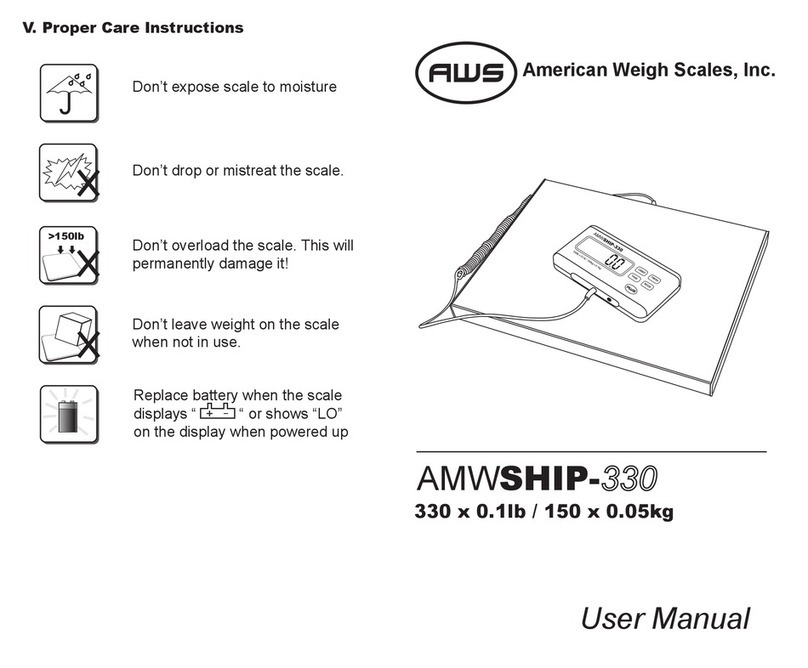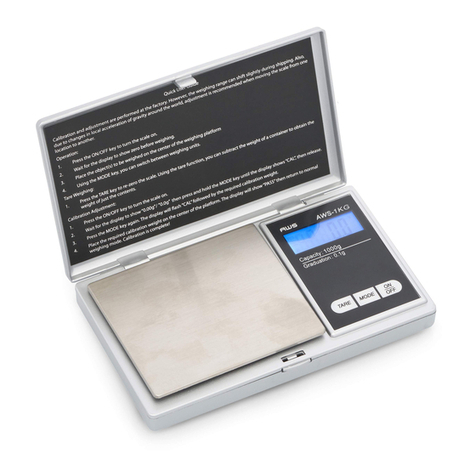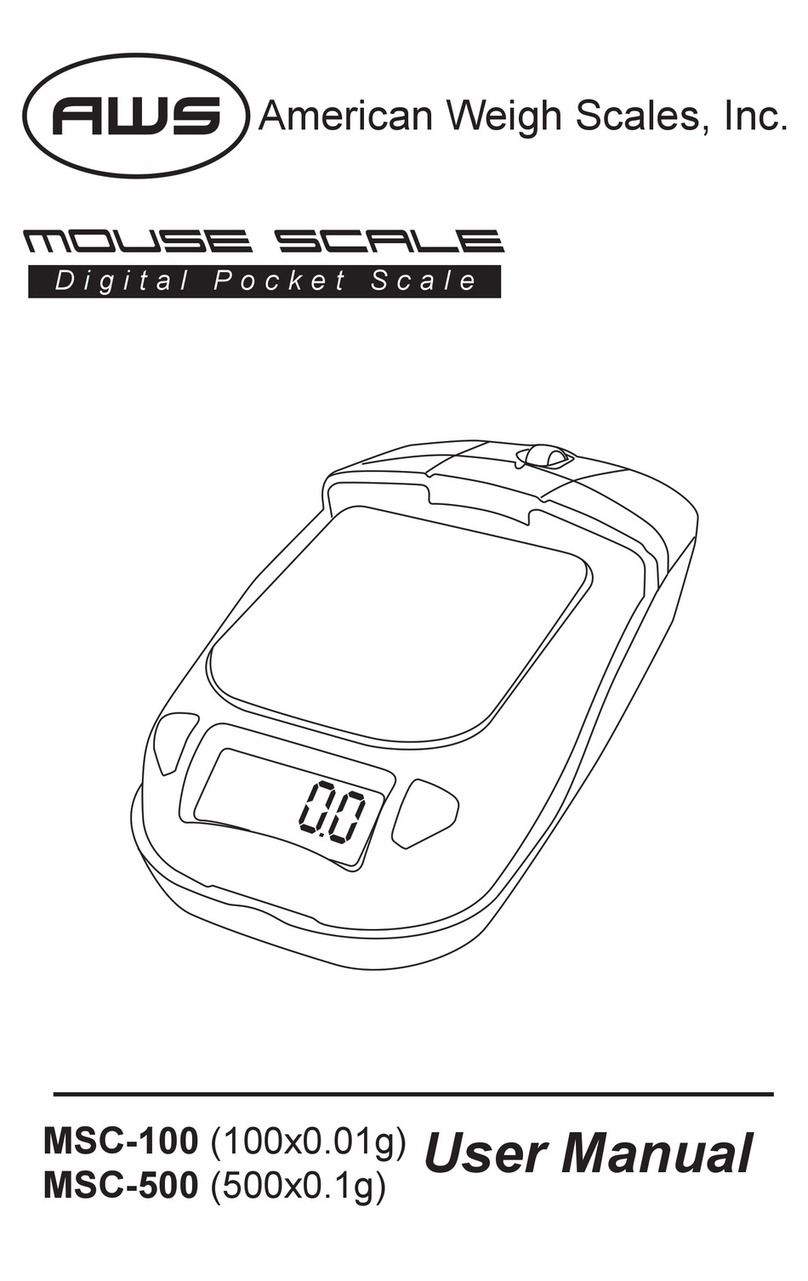
10
AL-Series Manual
3.2. Operating the Balance
3.2.1. Sample Weighing
1. Press TARE / ZERO to make the balance return to zero.
2. Load the sample onto the scale pan.
3. The weight is stable when g, oz/K, ct, %, or pcs (depending on mode) appears on the display.
3.2.2.Weighing with a container
Sometimes it is necessary to weigh an object (such as a liquid) using a container. To display just the weight of
the contents (net weight) and not the whole combined weight (gross weight), the TARE button is used.
1. Place an empty container on the weighing pan.
2. Once the weight stabilizes, press the TARE / ZERO key briefly.The display will retun to zero.
3. Add the sample to the container.
4. The weight is stable when g, oz/K, ct, %, or pcs (depending on mode) appears on the display.
3.2.3. Unit Switching
This balance has three possible weighing units. They are gram (g), ounce (oz/K), and carat (ct). Follow these
instructions to change the weighing unit:
• AL-201S:
1. Press and hold the MODE key for 3 seconds.
2. The weighing unit will cycle between g, oz(K), ct, %, and pcs.
• AL-311:
1. While in normal weighing mode press the UNIT button to switch between g, oz(K), ct.
3.2.4. Parts Counting
With items of uniform weight (ie. all the pieces are of equal weight value) it is possible to use this scales parts
counting feature to quickly and accurately obtain a piece count.To use the parts counting feature, follow
these instructions:
1. Press the MODE key until the display shows“pcs” to indicate parts counting mode.
2. Add a reference sample of pieces to the platform (or container). On the AL-201S, you should use 10 pieces.
On the AL-311 You may select between a reference sample of 10, 20, 50, or 100 pcs using the UNIT key.
4. Once the display shows “pcs”the setting is stored.You can now add any number of pieces to the platform
(or container) and the display will show a count.
Notes: The larger the sample size used, the more accurate the count will be.Tare can be used in this mode.
Min. sample weight = 10d (1mg for AL-201S, 0.01g for AL-311). Min. piece weight = 1d (0.1mg for AL-201S,
1mg for AL-311). The reference sample is not stored upon exiting parts counting mode.
3.2.5. Percent Weighing
You can use this balances percent weighing feature to show a percent of a whole, rather than a weight.
1. Press the MODE key until the display shows “%” to indicate percent weighing mode.
2. Add the full reference sample (100%) to the platform (or container). Wait for the display to stabilize.
3. You may now add any quantity to the scale and the display will show the % as it relates to the reference
sample.
Note: The reference sample is not stored upong exiting percent weighing mode.









































